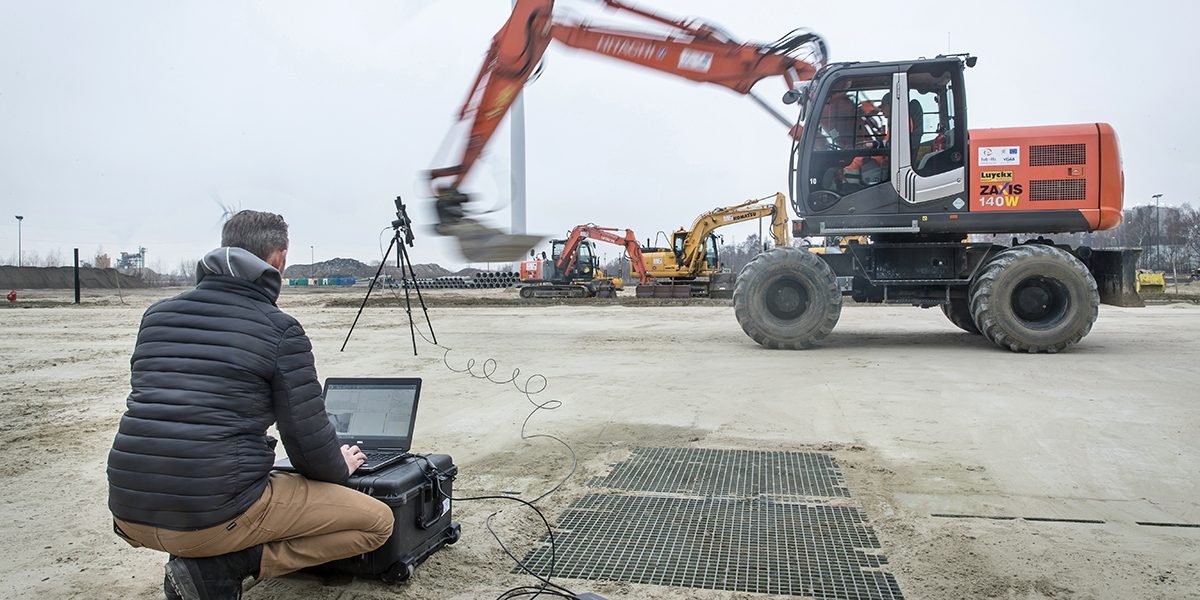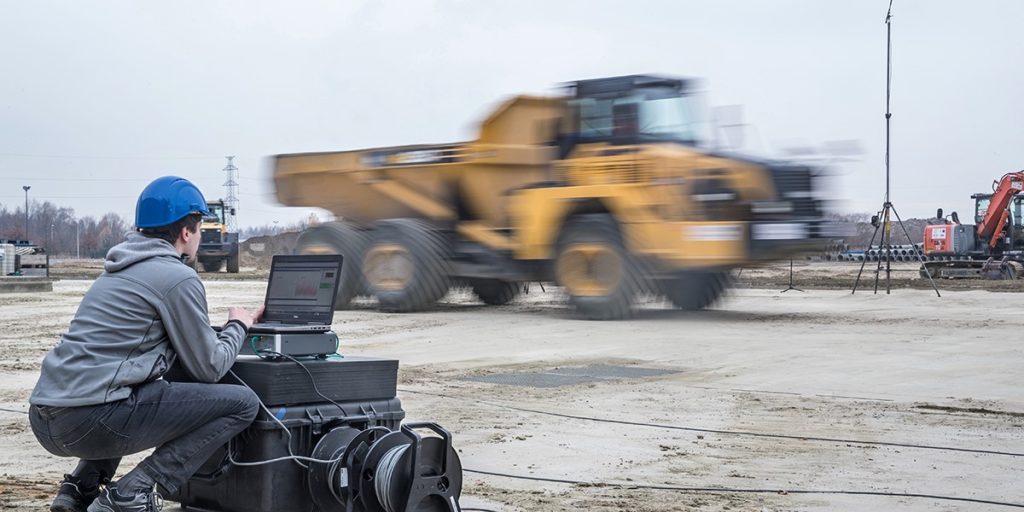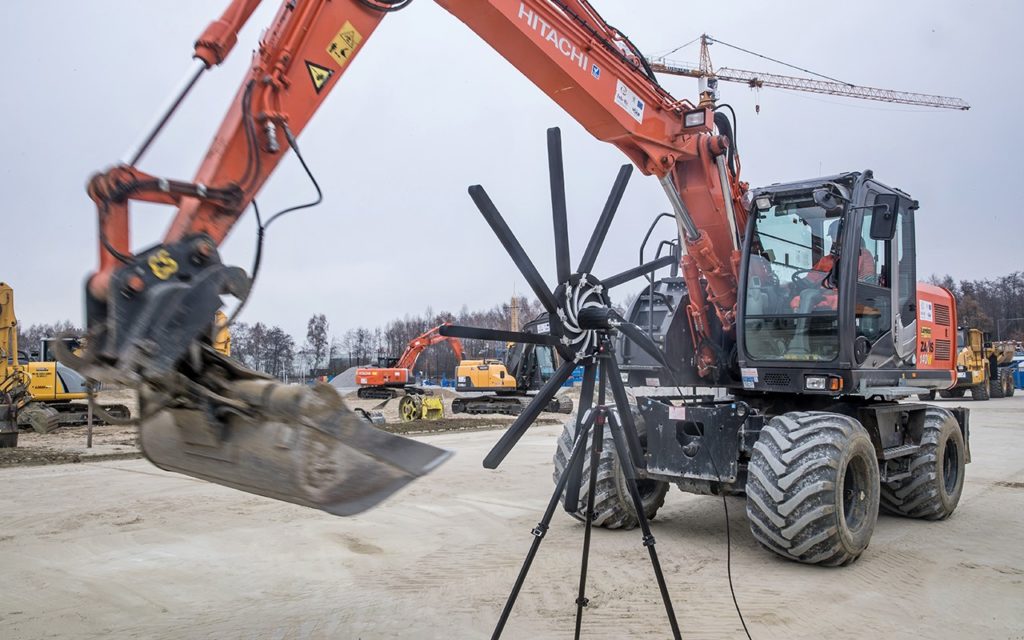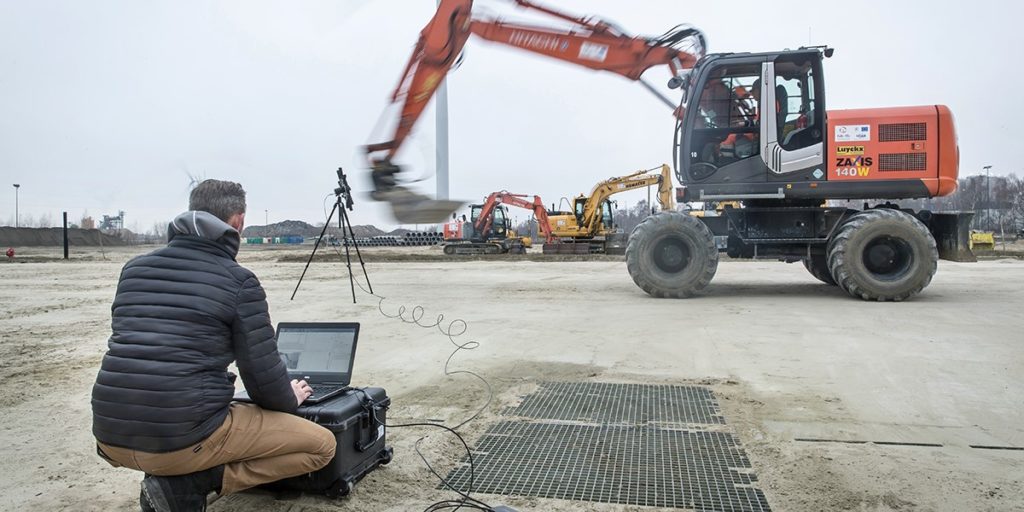Construction equipment noise levels: How to meet regulations

Being exposed to excessive noise emission levels for a long time has been proven to have an impact on the health and well-being of people. Especially in residential areas, most vulnerable people, including elderly, ill, children or those who work or study at home are affected. From my student time, I remember that I always got stressed when construction work was ongoing in my street. Particularly, during the examination period. When hearing the high-level noise that is discharged by an excavator on duty or a dump truck passing by, it always brought me to the same questions about how could the company:
- decrease noise levels?
- design to reduce the noise?
- improve the sound quality of heavy equipment?

To protect the community from noise pollution, the European Union laid down regulations for noise. These regulation for construction equipment noise levels require the machines to meet EU specified exterior maximum noise limits. Failure to remain below the limits has a huge business impact as units are not allowed to be sold on the EU market. As a consequence, development engineers of construction machinery are not only looking into measurement systems for ISO certification. They also look for solutions to identify the main noise sources and weak points to improve when noise limits are exceeded.
Typical challenges and pains that need to be addressed for exterior noise emission
Regulations & Standards
- Exterior Noise, Directive 2000/14/EC: to reduce environmental impact
- Pass-by Noise, Directive 1992/97/EC based on ISO362
NVH Engineering
- Hydraulic system: Pump with low ripple and sound levels
- Transmission/Axles: Gear Tooth Quality and Housing Design
- Cooling system: Low noise fan
- Engine: Low Sound and Vibration Levels
- Inlet and exhaust: exhaust noise is one of the most important contributors
- Machine Body: Noise radiated from vibrating body panels
Reducing construction equipment noise levels
A dedicated sound power earth-moving machinery solution has been developed to perform the certification testing in a most efficient and cost-effective way. Therefore, It allows the user to compute sound power values and sound pressure at operator position as indicated by the EU Directive/2000/14/EC. Thanks to the highly user-friendly and intuitive software, the user can manipulate the machine and the testing equipment simultaneously. This is a great advantage, especially in cases when you need to test a large number of machines, because you can proceed more efficiently at lower cost. Test reports are generated after each test and are also available for later retrieval. Moreover, the system also offers the possibility to remotely verify the validity of the calibration values of all the microphones due to an automated calibration procedure avoiding the time consuming and cumbersome manual calibration.

Authorities require certification according to pass-by noise regulations is case of off-highway vehicles such as dump trucks also need to drive on public roads. Siemens Simcenter portfolio offers a complete range of pass-by noise solutions for standard testing or engineering refinement.
NVH engineering for construction equipment noise levels reduction
Whether it concerns high exterior noise levels or overall product refinement Siemens Simcenter offers a complete solution for test-based engineering to address critical engineering tasks by tracing the fundamental cause of a problem and solve it effectively and quickly. An overview of some of the advanced NVH testing solutions:
Acoustics
Off-highway vehicles have many sources that can contribute to exterior noise generation. For example, the fan noise is typically a significant noise contributor, due to the cooling requirements of engine and hydraulic installations. To reduce the excessive noise, you need to have good understanding what component is exactly causing the issue. To find the answer promptly in just a few minutes avoiding a complicated test setup, you may apply the ‘sound source localization’ technique. In these situations, you can use tools such as Siemens Sound Camera and Siemens Soundbrush, to have spot-on localization of noise sources and help solve the noise issues in the most effective way.

Transfer Path Analysis
When noise levels are not within limits, an efficient design modification may be required. To do so effectively, this requires an in-depth understanding of the system. Transfer path analysis can help users to find the root cause and make important design decisions to reduce sound emissions directly from the prime sources like engine, cooling system, transmission or hydraulic system.

Structural Dynamics
To control the NVH of your off-highway vehicle it is important to also understand the system’s structural behavior to identify root causes of vibration problems and examine structural weak points. For example, when pumps in the hydraulic system are not well designed, they can cause ripple vibrations that can excite structural resonances of the pump housing. This can on its turn lead to excessive exterior noise. Or, low quality gears can induce vibrations that excite torsional resonances causing whining noise issues. Siemens Structural Dynamics solution will help you identifying root causes of vibration problems and explore the best solutions for every structural weakness.
Powertrain engineering
And finally, powertrain radiated noise is an important contributor to exterior noise. It is a highly complex process produced by engine, transmission, intake, exhaust and electrical motors. Powertrain noise optimization requires a comprehensive array of tools for vibro-acoustic troubleshooting and product refinement. Siemens Simcenter testing solutions for powertrain engineering offers multi-attribute functional performance testing for attributes such as torsional vibrations and combustion efficiency, a wide range of sound source localization tools and solutions to handle powertrain integration issues.
So, after so many years – when I recalled the moments I was extremely annoyed by the noisy construction equipment – I know what the strategies are to reduce the noise levels in heavy industrial machines.
Siemens Simcenter portfolio provides test-based engineering solutions to approach the NVH issues holistically. With Simcenter you will be able to spot resonances, noise sources, follow embedded acoustic testing procedures for NVH target setting and load transfer calculations. You can rely on these solutions for ride comfort and interior cabin comfort optimization. And of course, you can rely on Simcenter solutions for final prototype validation for market-ready, next-generation products that require ISO certification.
For more information check out this free webinar: Optimizing heavy equipment noise & vibration performance.


